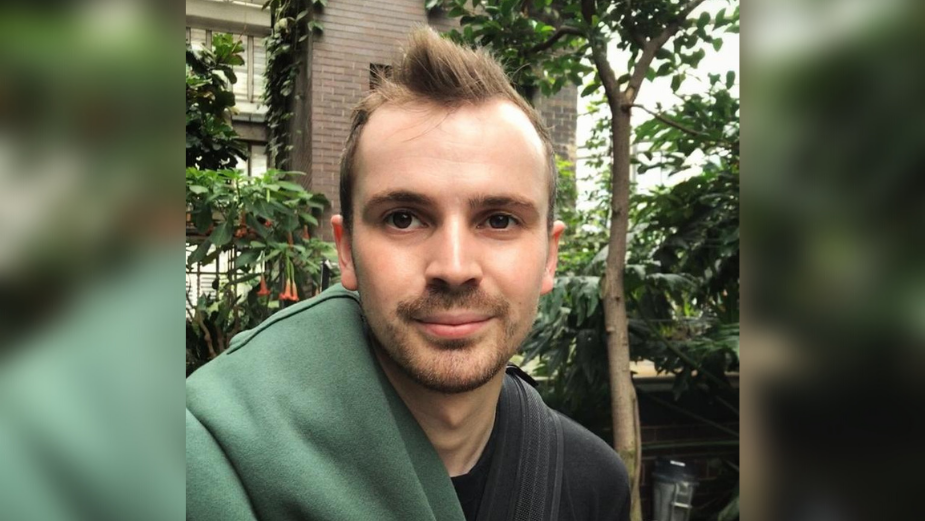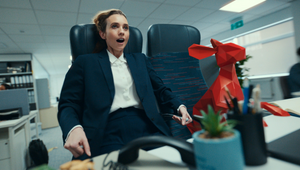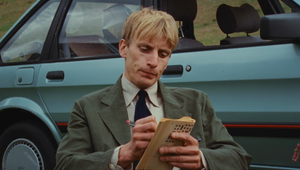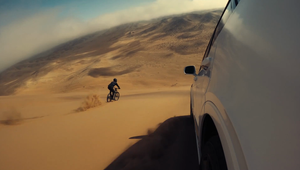
Making the Grade: Finding the ‘Perfect’ Solution with Dan Levy

Rascal Post's Dan Levy entered post-production as a professional photographer. His initial motivation to make beautiful and engaging images has been elevated by nearly a decade of experience at The Mill. His progression from runner to colour assist provided him with an unparalleled insight into the pipeline of a whole industry. Actively involved with every department, he helped troubleshoot and streamline company workflow and gained a thorough and precise understanding of technical operations and colour science. This technical proficiency, combined with a creative and acutely aesthetic eye, is reflected in his grades and supported by a string of regular clients.
LBB> What was your first experience with the world of colour grading – and when did you decide that being a colourist was a role that you wanted to pursue?
Dan> Not to be too much of a cliché but really my interest in colour began when I started taking photos — I’ve wiled away a lot of time in a dark room, scanning and editing my photos, with the ridiculous drum scanner I got myself. When I started at The Mill London about 12 years ago, I wanted to go into compositing and didn’t fully understand what grading was about, or its similarities with what I’d spend my own time doing. So to then see the colourists at The Mill, working with the moving film version of my own passion, I found myself staring at all I’d ever wanted to do, as quixotic as it seemed.
LBB> What was the project that you felt really changed your career?
Dan> I don’t think there is one — it just hasn’t worked like that for me, it’s been more incremental. Every job is a project of its own, and each one leads to the next and the next, and you gain experience each time. Maybe there’ll be one life-changing one in the future? Who knows. What has really changed my career in a short period of time was moving company. The wrong environment can send you into a torpor which can spread to your work. Rascal saved me from that, gave me the environment where I was doing the work I wanted to do and that’s what has massively changed my career for the better.
alt-J - Hard Drive Gold
LBB> How/where did you hone your craft and did you have any particular mentors?
Dan> The Mill was foundational to a lot I know about colour. It’s really quite a wonderful privilege to have worked with colleagues like Jim Bracher, Tim Smith, Oisin O’Driscoll, to name a few. They’re all exceptional colourists and have been really supportive, generous mentors. Plus there’s the creativity and camaraderie from those you work alongside — Megan Lee takes special mention here, a constant source of inspiration and knowledge. All that being said, grading is very personal: you learn from others but make your own mistakes — almost wilfully — at the same time, and that’s the only way you can confidently develop your own style.
LBB> Tell us more about your creative process.
Dan> The creative process for me can work a bit like a fractal… you can go on indefinitely, deeper and deeper into a look that’s always beautiful and always changing but never the ‘perfect’ solution. That’s why it’s so important to listen to your client. Talk first, then begin building with their vision in mind. Our time as a colourist on a project can be very short, you owe it to your clients to listen and to yourself, to discover and have fun.
LBB> From experience, we’ve found that colourists often love art and photography - when you’re out of the studio, what inspires you?
Dan> Well I’ve already managed to shoehorn the photography bit in. Otherwise, I’m a classically trained pianist — not a visual medium, but still fun to brag about. I do find it very calming, and when you can hear and feel your practice paying off it’s a deeply satisfying experience.
Halo Infinite - Master Piece
LBB> Colour grading is largely a digital affair, but there’s also been a resurgence of film over the past few years in commercials and music videos. What are your thoughts about working on film versus digital formats like 4K? And what are your favourite techniques for capturing a vintage or tactile feel?
Dan> Film is a joy to work with — I’ve even got myself an Arri SR2. I just love getting my hands on a different medium, and the depth, texture and ambience you can get to with film.
At the same time, cameras like the LF are getting close to being flawless with larger sensors, gaining an almost medium format depth to them. So of course they’re a pleasure to grade as well, and you can certainly apply what you learn from grading film to build looks on digital formats that closer emulate it.
LBB> When working in commercials, what role can colour and a grade play in enhancing a brand’s assets and what sort of conversations do you have with creatives and clients about that?
Dan> I certainly think there can be a ‘clean’ look. More often a light touch, which can sail past an approval process far easier than something being explored. Clients can fall in love with their offline and, with adverts especially, it can be hard to create something that breaks away or feels a bit different. To manage that you need to see the potential and then win the confidence of the agency and creatives, so they trust you to take a lead on it. Again, it’s really about listening. That way, you can create something that won’t detract or overpower the brand while still getting to explore the footage and find what may have remained hidden.
King Krule - Biscuit Town
LBB> How do you ensure that each colourist-director partnership is a success?
Dan> I always try to build trust and a good rapport with the director. For me, it’s very important to see how they approached the project with a good conversation first. Then I can start building that grade while, if possible, imparting something new into that vision. If I, as a contributor to this project, can find something the director didn’t see initially, a real partnership can start. But the grade is a very subjective part of the post process, and flexibility is essential. Following direction and remaining pliable can lead you to discover something you most likely wouldn’t have noticed without exploring their input.
LBB> In your opinion, what’s the difference between a good grade and a great grade?
Dan> A good grade is fit for purpose. It doesn’t detract, it cleanly flows and complements the picture. Like good audio, it’s crucial to a piece of work, and when it’s done well it can almost go unnoticed. A great grade, on the other hand, can lift a project beyond its original level, add a whole new texture to the visual language and affect how the viewer remembers what they’ve just watched.
LBB> How is the craft and trade of colour grading changing?
Dan> I’m too short in the game to be answering that. Whatever does happen I’m here for it.















